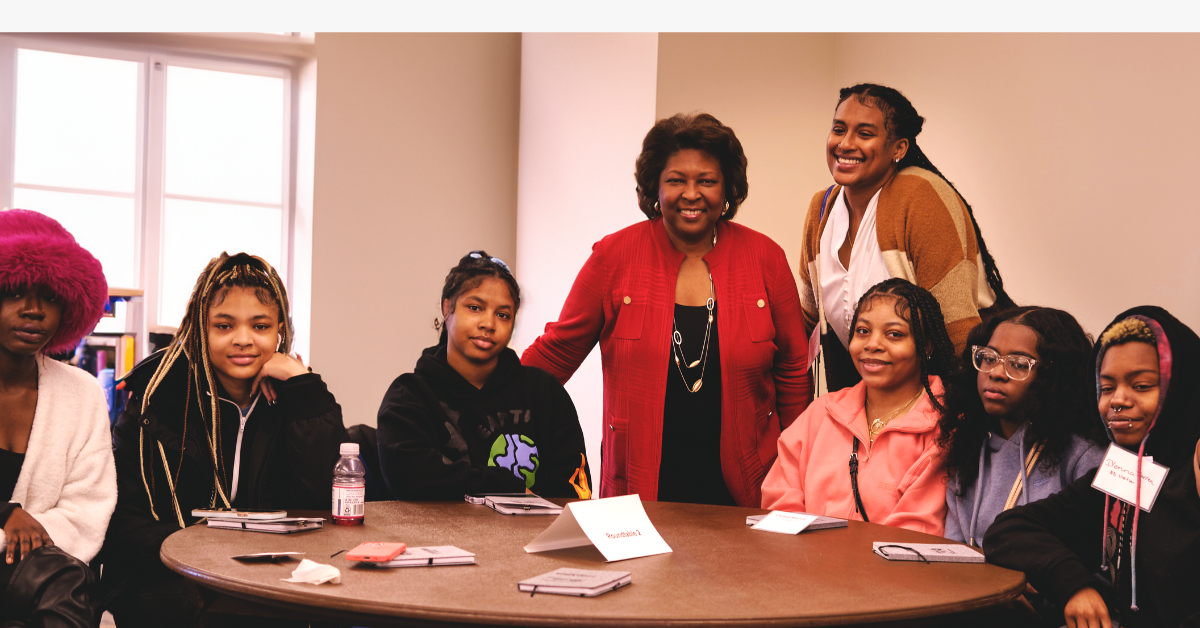
The zip code where you’re born can significantly influence the trajectory of your life. The resources and opportunities available within arm’s reach can set the stage for either prosperity or hardship.
This phenomenon, known as spatial inequality, is a tangible reality that shapes the futures of many—especially those within the ALICE threshold, who are working yet struggling to afford necessities. The ALICE (Asset Limited, Income Constrained, Employed) population represents nearly 500,000 low to moderate-income households in our region that face these hardships daily. This translates to an estimated 1.3 million adults and children in the National Capital Area that earn more than the Federal Poverty Level ($26,500 annually for a family of four) but less than the basic cost of living for the county/state in which they live.
Across the neighborhoods of Washington, D.C., spatial inequality presents itself in stark relief. While some areas thrive with abundant access to education, healthcare, and upward mobility, others grapple with their absence.
At United Way NCA, we are acutely aware of the disparities the ALICE population faces and are actively working to level the playing field. From education initiatives to health programs, our efforts strive to dismantle the barriers erected by spatial inequality.
Read on to learn more about the complexities of spatial inequality in our region and see how we can forge paths to a more equitable future for every member of our community.
What Is Spatial Inequality?
Spatial inequality is the term we use to describe the unequal access to resources, opportunities, and services between different areas or regions.
It’s apparent in the differences between neighborhoods: some have flourishing schools, robust healthcare, and vibrant job markets, while others are struggling with underfunded education, limited medical services, and scarce employment.
This kind of inequality often hits marginalized communities the hardest, leading to fewer opportunities and worse outcomes for residents, particularly affecting low-income families and people of color.
It’s a significant barrier to achieving equal life chances for all and highlights the need for targeted community support and development strategies.
Examples of Spatial Inequality
Understanding spatial inequality is one thing; seeing its impact on the community is another. Here are some concrete examples of how spatial inequality manifests in the DC region, each contributing to the disparity in quality of life and opportunities for residents.
Redlining’s Legacy
Redlining has cast a long shadow over the United States, and its effects are still apparent today. By systematically denying financial services based on race, neighborhoods with predominantly residents of color suffered. The resulting economic stagnation in these areas still hinders their growth and deprives residents of equal opportunities.
Education Funding Disparities
The link between local property taxes and school funding creates a chasm between the ‘haves’ and ‘have-nots.’ Affluent areas within the DC region can funnel more into their educational systems, while lower-income areas have to contend with what’s left, perpetuating an education gap that echoes through generations.
Healthcare Access: A Geographic Divide
Access to healthcare can be a zip code lottery. Some DC communities enjoy numerous healthcare facilities, while others are healthcare deserts. This disparity leads to unequal health outcomes, where preventable illnesses go unchecked, and life expectancy can differ dramatically between neighborhoods mere miles apart.
Why Does Spatial Inequality Exist in Urban Areas?
Peel back the layers of any city, and you’ll uncover a complex history of resource distribution that has, for better or worse, carved out the disparities we see today. The vibrancy of city life often masks a deeper issue: not all residents share in the urban wealth.
Urban centers, teeming with potential, can still fail citizens when essential support structures, like robust public transportation, are missing or inadequate. This creates invisible barriers, stranding residents in pockets of poverty, even as resources abound just out of reach.
From the dark legacy of redlining to the unequal allocation of educational funding, systemic issues have sown seeds of division. Such practices have historically entrenched advantages in select neighborhoods, often along socioeconomic and racial lines, while others are left to make do with less, their growth stifled by this imbalance.
How Does Spatial Inequality Affect Urban Sprawl?
Spatial inequality stretches far and wide, often instigating the phenomenon of urban sprawl. As individuals and businesses migrate from areas they perceive as disadvantaged, they inadvertently contribute to the creeping expansion of city boundaries.
This outward migration can drain inner-city areas of vitality and resources, exacerbating the divide. Resources dwindle and create an even more fragmented cityscape. It’s a cycle that not only spreads cities thin but also deepens the chasms of inequality.
How Spatial Inequality Impacts Economic Opportunity
Spatial inequality is a barrier that often determines who can access steady, well-paying jobs. It’s not just about location; it’s about access to resources that can cultivate economic growth—like education and professional development—which remain out of reach for many in underprivileged areas.
In regions where this inequality is stark, the tools for economic advancement—banks, loans, and business networks—are scarce. This drought of resources stifles local enterprise and deters the entrepreneurial spirit, further entrenching the economic divide.
The effects ripple outward, reinforcing cycles of poverty and preventing wealth accumulation among those in disadvantaged communities. It’s a pattern that deepens the income gap and undermines the financial stability of entire neighborhoods.
United Way NCA is actively working toward a more equitable future. By investing in community programs and support systems, we aim to dismantle these barriers and foster a landscape where economic opportunities are abundant and accessible for all.
Strategies for Addressing Spatial Inequality
Combatting spatial inequality involves a collaborative, multifaceted strategy. Here’s how we can start making a change:
- Invest in Education: Elevating educational facilities and resources in under-resourced areas can spark opportunity and growth, providing a ladder out of the cycle of inequality.
- Promote Affordable Housing: Ensuring everyone has access to affordable housing through various supports can stabilize and uplift communities, laying a foundation for a better future.
- Support Local Businesses: By aiding local entrepreneurs with finance and mentorship, we seed economic revitalization from within, which can flourish into broader community prosperity.
- Transportation Equity: Developing accessible and efficient public transit connects isolated communities to more opportunities, enabling residents to venture further afield for work and services.
- Healthcare Access: Expanding healthcare facilities in underserved areas can significantly improve quality of life, contributing to a healthier, more robust community.
- Community Engagement: Encouraging local participation in decision-making fosters policies that reflect the community’s needs and ensure that everyone’s voice is heard.
Addressing spatial inequality requires a comprehensive and inclusive approach that encompasses education, housing, economic development, transportation, healthcare, and community engagement.
At United Way NCA, we are committed to working collaboratively with communities and partners to implement these strategies and create a more equitable and inclusive future for all.
How We’re Tackling Spatial Inequality in the DMV Area
United Way NCA is at the forefront of bridging the gaps created by spatial inequality within the diverse tapestry of the DMV area. With initiatives like Project Community Connect, we extend a hand to the ALICE population and those facing homelessness, offering a path to enduring housing security.
Our commitment to cultivating well-being takes shape in our health outcome initiatives. By breaking down the barriers to nutritious food, promoting lifestyles that include physical activity and balanced diets, and broadening the reach of mental health education and services, we’re nurturing the roots of a healthier community.
Education is another pillar of our strategy. We champion educational empowerment for students in underrepresented neighborhoods, equipping them with the tools and support needed to achieve academically and chart a new course that rises above the shadows of inequality.
Our powerful network of five Financial Empowerment Centers across the region are a testament to our dedication to economic advancement. Here, individuals gain insights into managing finances, enhancing credit scores, and navigating the complexities of housing—all vital steps toward economic resilience in the face of spatial inequality.
Discover how United Way NCA is forging paths to equality and how your engagement can make a tangible difference. Connect with us to learn more and join our mission to ensure that the DMV is a land of equal opportunity for all who call it home.


